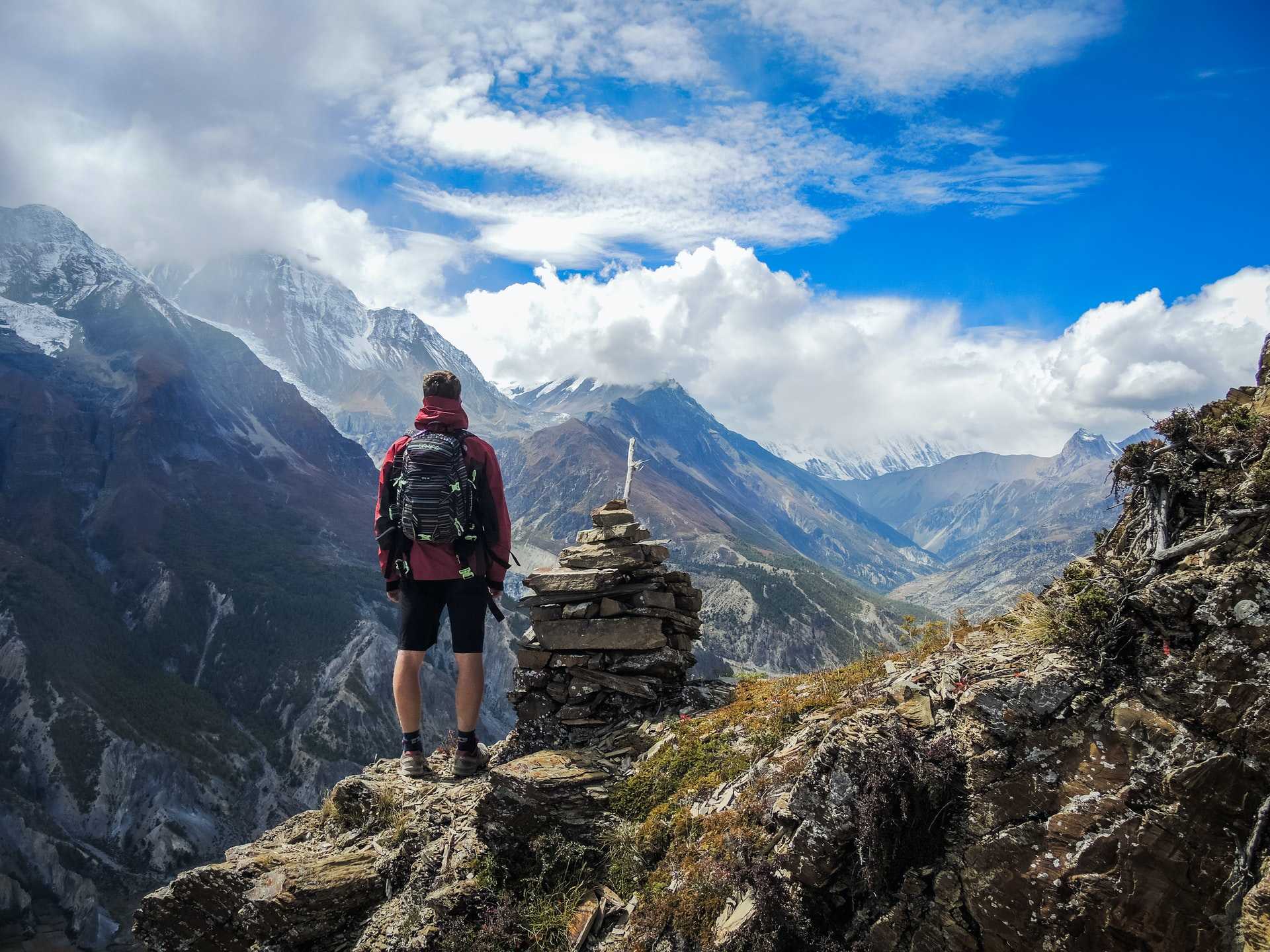Our equipment recommendations for trekking in Patagonia
Basic Equipment

Waterproof duffle bag:
To carry your main gear we recommend using a 110-120L duffle bag.

Daypack:
You will need to carry your own equipment whilst on the trek. 30-40L is sufficient. We recommend Osprey daypacks. Note: your backpack for trekking will be for your personal equipment only and will not include tent, sleeping bag or mattress as these will be provided at the sites.

Sleeping bag:
You will need a 4-season or -20 Deg C sleeping bag and compression sack. We recommend Mountain Hardwear or The North Face sleeping bags.

Trekking poles:
Trekking poles can reduce the impact on your joints by up to 20%. They are great for going downhill as well as up! We recommend adjustable Black Diamond or Alpkit trekking poles

Water bottles:
Capacity to carry at least 2 litres of water. Wide-mouthed Nalgene bottles are recommended.
Head

Sun hat:
Preferably wide-brimmed for protection, and with a neck cover if you aren't going to be using a neck gaiter

Warm beanie style hat:
Go for a version of beanie that is either knitted or fleeced for extra warmth.

Neck gaiter or balaclava:
It can get very windy in Patagonia which can create quite a chill. We recommend bringing a neck gaiter or bandana. The most versatile options are made by Buff or Hoo-Rag Headwear

Sunglasses:
Choose a pair of high UV protection glasses. Julbo are a great mountain sunglass brand but any brand with high UV protection will suffice

Headlamp:
You will need a headlamp with good light output for any late night toilet journeys. Petzl make market-leading and affordable headlamps
Hands and Feet

Lightweight gloves:
For daily use we recommend lightweight, fleece or quick drying fabric gloves. Berghaus and The North Face make good lightweight gloves

Socks:
3-4 pairs of outer socks and 2-3 pairs of liner socks. We also recommend bringing 1 x thick thermal socks for summit night. Merino wool is the best material and Bridgedale or Smartwool make good trekking socks

Training shoes:
To wear around camp after a day's trek we recommend bringing a pair of training shoes or sandals

Trekking boots:
We recommend using a mid-weight trekking boots with good ankle support. Recommended brands include: Salomon, Scarpa, Hi-Tec and Merrell

Gaiters:
Help keep your trousers clean in wet and muddy conditions.
Upper Body

Thermal base layer:
2 x thermal base layer, ideally made from merino wool. No cotton. Recommended brand is Icebreaker

Long sleeved shirt:
Go for a light or medium weight, moisture wicking long sleeve shirt (x2). Icebreaker, Berghaus and Under Armour make great breathable trekking shirts.

Fleece or Soft shell jacket:
A mid-weight polartec fleece jacket is ideal. Berghaus, Helly Hansen and The North Face all make great fleeces

Hard shell outer jacket:
A water/windproof hard shell outer jacket to protect you from the elements. Goretex material is best. Recommended brands include The North Face, Arc'teryx, Berghaus and Mountain Hardwear

Insulated jacket:
A good quality and warm down or primaloft jacket is required for the cold nights. Recommended brands include The North Face, Rab, Arc'Teryx and Mountain Hardwear
Legs

Base layer:
'Lightweight' or 'silk weight' base layer for your legs. Merino wool is preferable. Recommended brand is Icebreaker

Trekking trousers:
Light or medium weight (x1) trekking trousers. Convertible trousers are an option. Recommended brands include Craghoppers and Columbia

Hard shell trousers:
To protect yourself from the elements you need a good pair of waterproof / windproof hard shell trousers. Ideally Goretex. Patagonia, The North Face and Arc'teryx make good outer trousers
Odds and Sods

Toothbrush and toothpaste:
Ideally travel size

Wet wipes and hand sanitizer:
Staying clean on any long trek can be challenging. Wet wipes and hand sanitizer are a huge help

Personal medicines and medical kit:
We recommend bringing Paracetamol and Imodium at a minimum

Pee bottle (optional):
Useful for late night toilet needs when it is freezing outside

Ear plugs:
For light sleepers. Snoring can be pretty bad in camp

Personal snacks:
Boiled sweets, nuts, energy bars and dried fruit are all a good shout

Dry bag:
Only required if your main duffle bag or rucksack is not waterproof. Sturdy rubble sacks will also help to keep your kit dry

Camera and spare batteries:
Unless you are a keen photographer we recommend taking a good quality and lightweight point and shoot camera like the Panasonic Lumix.

Plug adapter:
A plug adapter for charging your devices in the hotels before and after the climb. See Argentina Travel Guide for advice on which adapter you will need.











